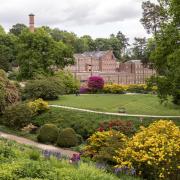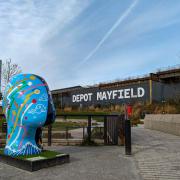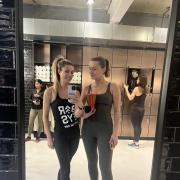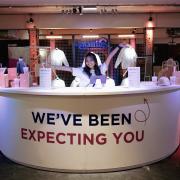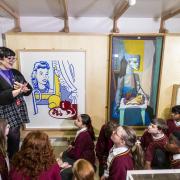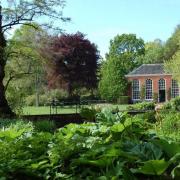A battle with cancer didn’t stop Manchester couple Ian and Catherine Hay opening a gallery in Castlefield

Opening a gallery with scant knowledge of the wheeler-dealing art world might sound like folly but Manchester couple Ian and Catherine Hay have been surprisingly successful.
Take into account that the Saul Hay Gallery is off the beaten track accessed by a private bridge in the Castlefield area of Manchester and all their experience was about buying rather than selling art and their achievement is pretty impressive.
So why do it?
‘There was a certain element of midlife crisis to it,’ laughs Ian a former pensions administrator and IT specialist.

‘And opportunity arose because the finances had fallen in place and allowed us to do it. We downsized as the children were leaving home – although the last one actually only left a few weeks ago!’
‘We wanted to do something together as a business,’ continues Catherine.
‘There were loads of brilliant artists and studios and publicly funded galleries in Manchester but private and commercial galleries didn’t have the work that excited us.
‘And we wanted to do something ridiculously scary!’

Ian and Catherine who are both 50 this year admit it was just one of those things they’d never put into words.
‘We wanted to have our own business so we were always looking for possible ideas and this was one that just dropped into place. It was an epiphany. It was genuinely driven by a love for 20th century art.’
In spite of this it was a bold move for the pair who met more than 30 years ago and whose first foray into art they explain with some amusement was a Van Gogh print which Catherine bought for Ian’s 21st birthday.
Of course they’ve gone on to collect art from emerging and established artists including BP winner Andrew Hunt and Canadian artist Andrew Salgado and develop a taste for less mainstream works.
Another possible contributing factor for opening the gallery was that seven years ago Ian was diagnosed with CLL – chronic lymphocytic leukemia.
‘It makes you think, well, if you don’t do it now you never will,’ he says.
‘It definitely puts things into perspective and begin to think what’s the worst that can happen.’
Catherine explains: ‘This kind of cancer is a slow growing cancer. They tell you you’ve got it but they are not going to do anything about it for several years, so you can’t stop living your life and wondering when you might have to undergo treatment.’
As it was, they opened the Saul Hay Gallery in October 2016 and he was told he would need to undergo chemotherapy in December.
‘Last year between March and September I underwent six months of chemo, which was interesting.’ he says.
‘Then it took six months to get over. I’m in full remission at the moment so things are looking pretty positive. But the timing could have been better.’
The easiest bit about opening the gallery was recruiting the artistic talent to fill it.
‘It was all about approaching artists we’ve either admired or seen work in various exhibitions or online,’ says Ian.
‘We had some really great names people we were expecting to say no. People like Mandy Payne who at that stage had just been shortlisted for the John Moores prize for Art. She was the first artist who said she would work with us, even before we had a space. She has been really great and really supportive of what we are doing and that has generally been the case ever since.’
It’s the business and commercial side of running a gallery which has been the steepest learning curve for the pair.
Catherine, a former nurse, explains: ‘We have developed into showing regular exhibitions and the gallery has developed a life of its own.’
And Ian adds: ‘The way we work has evolved and has been dictated by the building itself and the location. Because we are not on the high street we have to make it a destination. So having regular exhibitions and talks has helped.’






